Reptiles have long fascinated humans with their prehistoric appearance and unique behaviors. While many people picture reptiles as predominantly brown or green, the pet trade offers access to some truly spectacular species that display vibrant colors and patterns. From electric blues to fiery oranges and every shade in between, colorful pet reptiles can add both visual interest and engaging companionship to your home. Before choosing a reptile based on its appearance, it’s important to research its specific care requirements, as some of the most striking species may require specialized husbandry. This article explores some of the most visually stunning reptiles available to keep as pets, highlighting their color variations, care needs, and suitability for different experience levels.
Day Geckos: Living Jewels
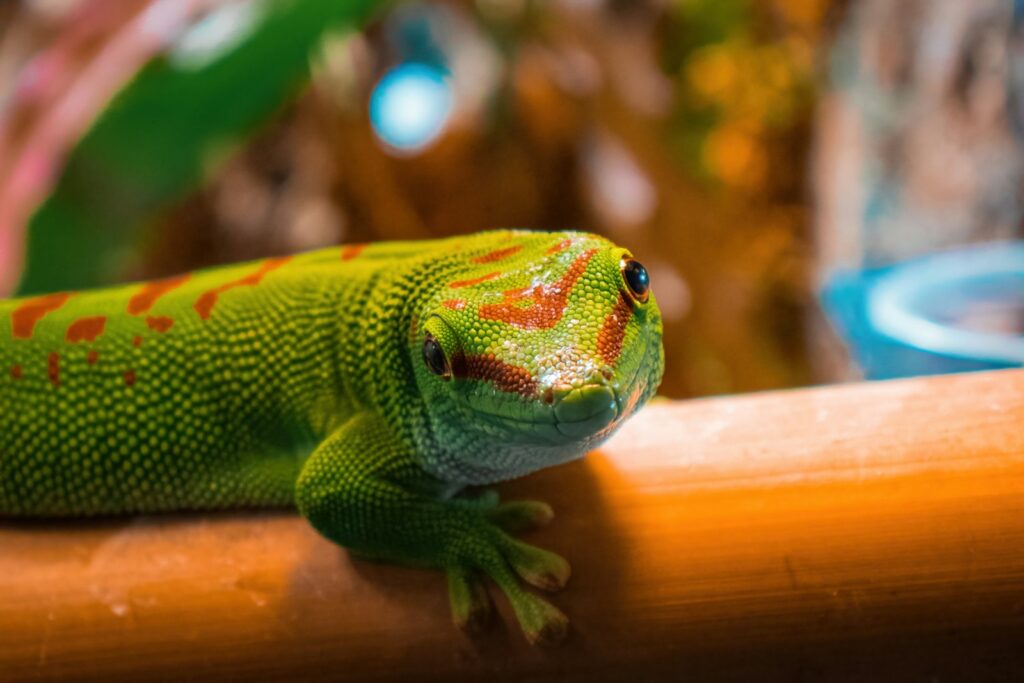
Day geckos, particularly the Madagascar giant day gecko (Phelsuma grandis), are among the most colorful reptiles in the pet trade. Their vibrant emerald green bodies are often accented with brilliant red or blue markings, creating a stunning visual display that resembles a living jewel. Unlike many reptiles that are primarily nocturnal, day geckos are active during daylight hours, allowing owners to fully appreciate their remarkable coloration. These arboreal lizards require tall, planted enclosures with precise humidity and temperature gradients to maintain their health and vivid colors. While their beauty is undeniable, potential owners should note that day geckos are generally considered display pets rather than handling pets, as their skin is delicate and can tear easily with improper handling.
Panther Chameleons: Nature’s Color-Changing Masters
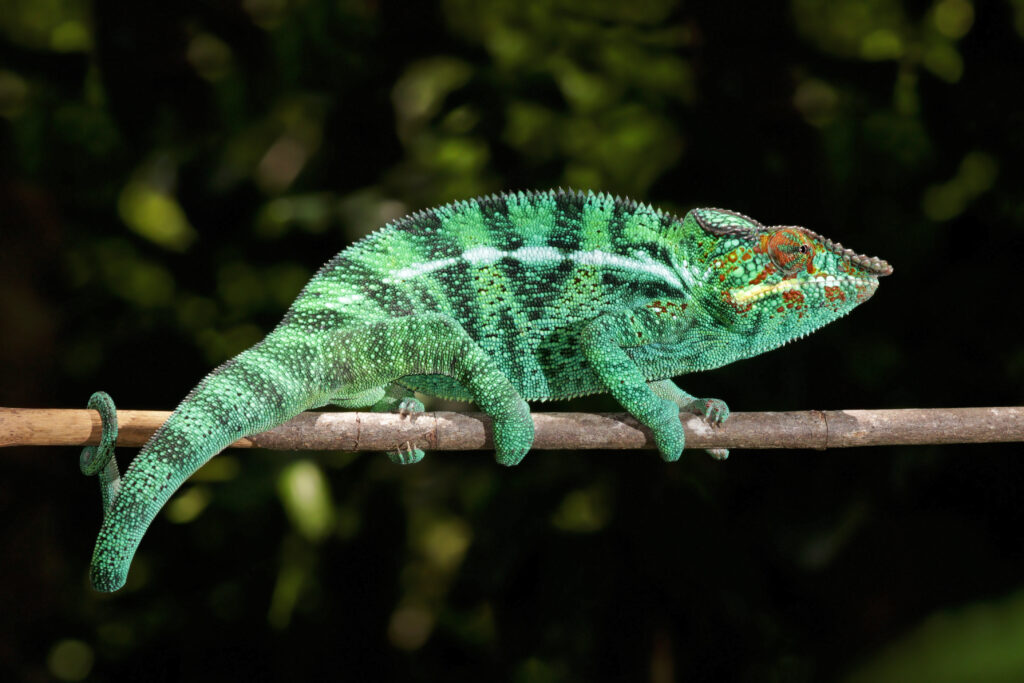
Panther chameleons (Furcifer pardalis) from Madagascar are arguably the most colorful reptiles available in the pet hobby, with males displaying an astonishing range of blues, reds, greens, and oranges. What makes these reptiles particularly fascinating is that their coloration varies dramatically based on their locale of origin, with specimens from Ambilobe, Nosy Be, and Ambanja each displaying distinctive color patterns. Their ability to change colors based on temperature, mood, and breeding condition adds another dimension to their visual appeal. Caring for panther chameleons requires significant dedication, as they need spacious mesh enclosures, carefully controlled temperature gradients, UVB lighting, and a diet of varied live insects. While breathtakingly beautiful, panther chameleons are better suited to experienced keepers who can meet their specialized environmental and dietary requirements.
Blue-Tongued Skinks: Surprising Splashes of Color
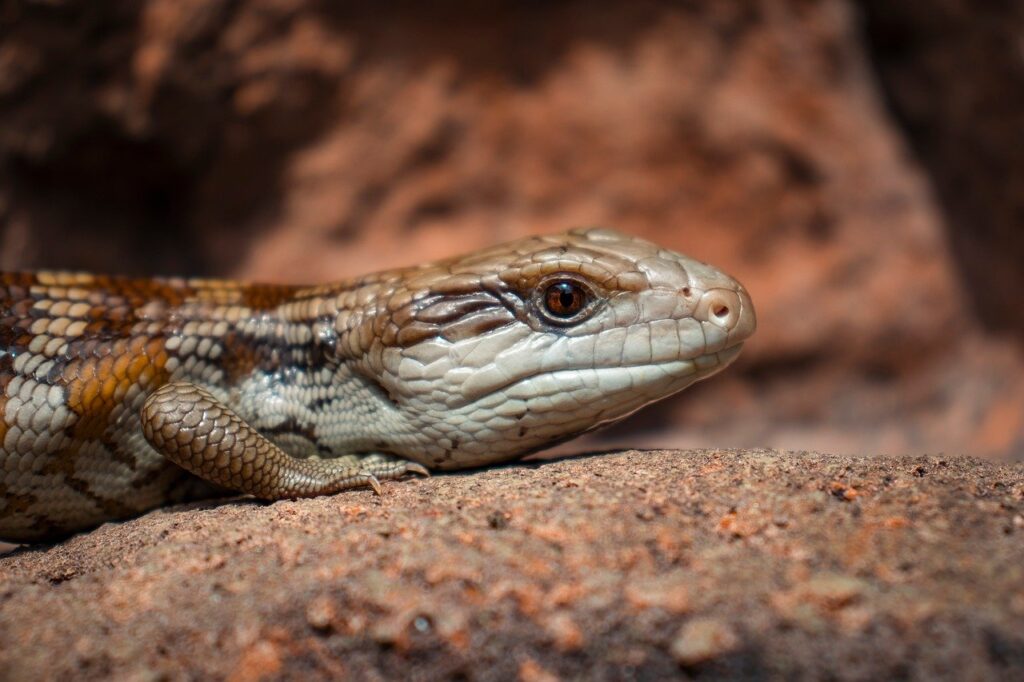
Blue-tongued skinks may not immediately come to mind when thinking of colorful reptiles, but their namesake bright blue tongue creates a stunning contrast against their patterned bodies. Several subspecies, particularly the Northern blue-tongued skink (Tiliqua scincoides intermedia) and Indonesian blue-tongued skink (Tiliqua gigas), display beautiful orange, red, or pink highlights on their flanks. When threatened, these skinks flatten their bodies to display these colorful markings while flashing their vibrant blue tongues, creating a memorable defensive display. Blue-tongued skinks make excellent pets for reptile enthusiasts of various experience levels, as they’re generally docile, handleable, and adapt well to captivity with proper care. Their omnivorous diet includes vegetables, fruits, and protein sources, making them relatively straightforward to feed compared to insect or rodent-exclusive eaters.
Bearded Dragons: Designer Morphs with Vibrant Colors
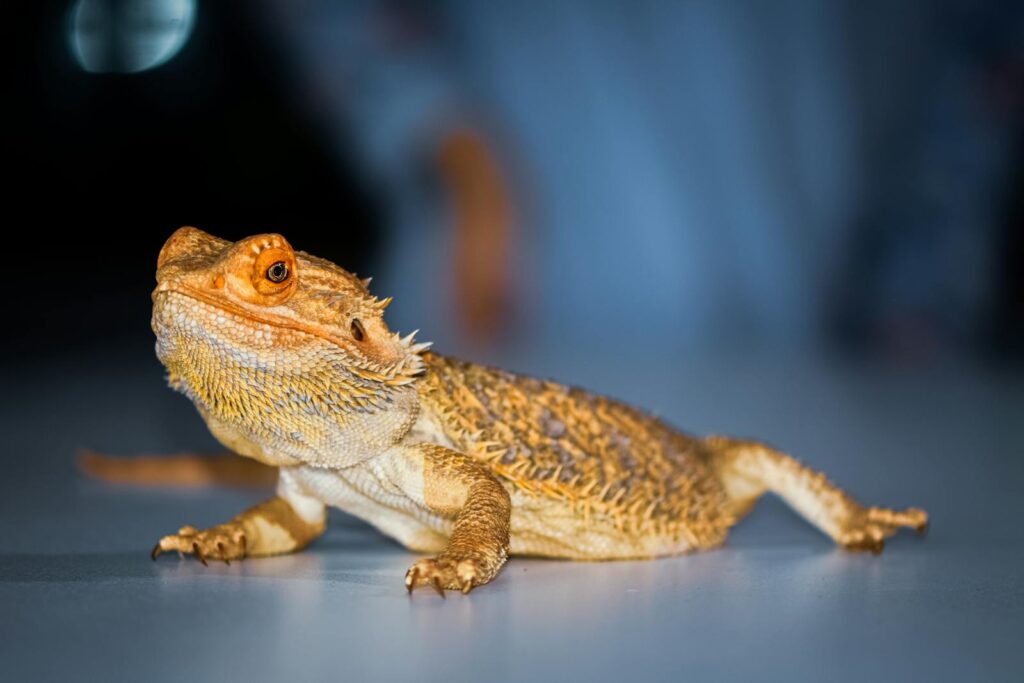
While wild-type bearded dragons display primarily earth tones, selective breeding has produced stunning color morphs that make these popular lizards more visually striking than ever. Hypo, translucent, and leatherback morphs can display vibrant orange, yellow, and red coloration, while the relatively new “witblit” morph showcases beautiful white and blue tones. During breeding season, female bearded dragons may develop bright orange markings on their sides and heads, adding seasonal color to their appearance. Their ability to change colors slightly based on temperature and mood also adds to their visual appeal. Bearded dragons remain one of the most beginner-friendly reptiles, combining striking coloration with manageable care requirements and generally friendly temperaments, making them excellent first reptiles for those drawn to colorful pets.
Gargoyle Geckos: Kaleidoscope of Patterns

Gargoyle geckos (Rhacodactylus auriculatus) from New Caledonia offer an impressive array of colors ranging from deep reds and oranges to striking yellows, whites, and even purples. What makes these geckos particularly special is the incredible variety of patterns they can display, including stripes, blotches, and reticulated networks that create unique, individual appearances. Some high-end “designer” morphs can display several vibrant colors simultaneously, making them living works of art. Gargoyle geckos have become increasingly popular as pets due to their manageable size, relatively simple care requirements, and fruit-based diet that eliminates the need for live insects. Unlike many other colorful reptiles, gargoyle geckos are reasonably handleable once acclimated, though they should always be treated with gentle care.
Corn Snakes: Rainbow of Morphs
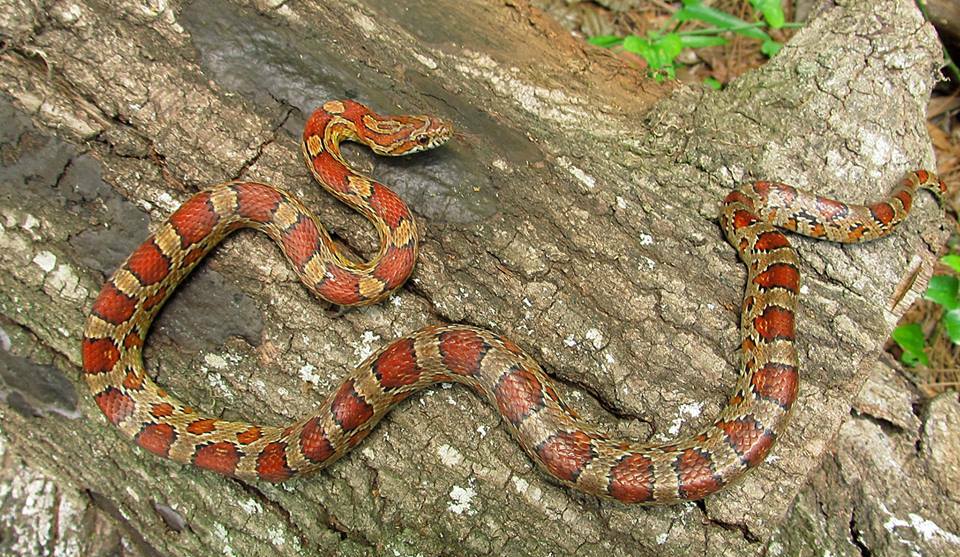
Corn snakes have undergone decades of selective breeding to produce an astounding variety of color and pattern morphs, making them among the most visually diverse reptiles in the pet trade. From the vibrant oranges and reds of classic corns to the stunning lavender, caramel, butter, and candy cane morphs, these snakes offer colors to match any aesthetic preference. Some of the most striking morphs include the tessera pattern variant, which creates maze-like markings, and the scaleless corn snake, which provides an unobstructed view of their vibrant coloration. Beyond their beautiful appearance, corn snakes make excellent pets due to their manageable size (typically 3-5 feet as adults), docile nature, and straightforward care requirements. Their reasonable price point compared to other colorful reptiles makes them accessible options for beginners looking to add vibrant color to their reptile collection.
Crested Geckos: Dalmatians, Flames, and Harleqins

Crested geckos (Correlophus ciliatus) offer an incredible palette of colors including red, orange, yellow, white, and various shades of brown and gray. What makes these New Caledonian geckos particularly appealing are their distinctive pattern types, including “flames” (solid coloration on the sides with a distinct border down the back), “harleqins” (patches of contrasting colors), and “dalmatians” (spots scattered across the body). Selective breeding has produced increasingly vibrant specimens, with some high-end examples displaying rich, saturated colors that can change slightly in intensity depending on temperature and time of day. Crested geckos are among the most beginner-friendly colorful reptiles, requiring no special lighting and thriving on commercially available powder diets mixed with water, eliminating the need for live insects once they reach adulthood.
Green Tree Pythons: Living Emeralds

Green tree pythons (Morelia viridis) represent the pinnacle of vivid coloration among pet snakes, with adults displaying a range of green hues from lime to emerald that often feature blue, white, or yellow accents. What makes these snakes particularly fascinating is their dramatic ontogenetic color change; most juveniles start life as either bright yellow or deep red before transitioning to their adult green coloration around 6-12 months of age. Different localities produce distinctive color patterns, with Biak specimens often retaining blue markings and Jayapura specimens frequently displaying yellow highlights. While undeniably stunning, green tree pythons require specialized care with precise temperature and humidity gradients, appropriate arboreal enclosures, and careful handling protocols as they can be defensive compared to other commonly kept pythons.
Leopard Geckos: From Wild Type to Super Giants
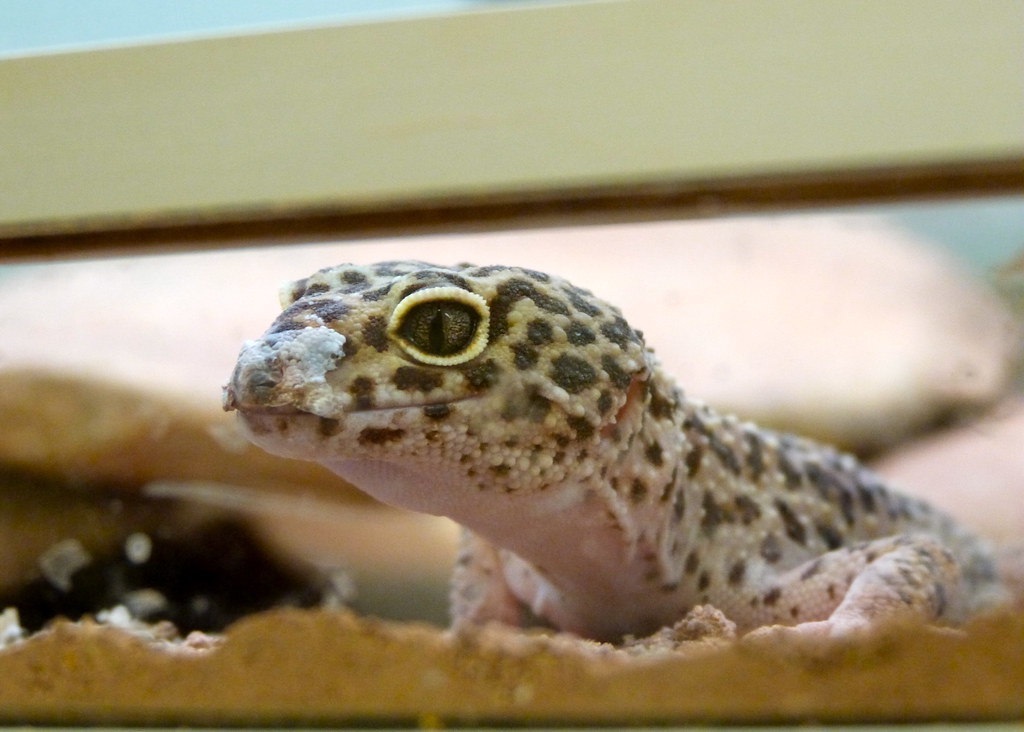
Decades of selective breeding have transformed the modest-colored wild leopard gecko into a canvas for some of the most striking colors in the reptile hobby. Modern leopard gecko morphs range from vibrant tangerines and bright yellows to stark black and white contrasts in the “bold” strains. Super hypo tangerine carrot-tail geckos display brilliant orange coloration, while enigma morphs can show lavender hues rarely seen in reptiles. The relatively recent development of “galaxy” and “white and yellow” morphs has pushed the color boundaries even further, creating specimens that barely resemble their wild ancestors. Beyond their striking appearance, leopard geckos remain one of the most suitable reptiles for beginners, with straightforward care requirements, manageable size, and generally docile temperaments that make them excellent handling pets.
Poison Dart Frogs: Amphibians with Unmatched Color
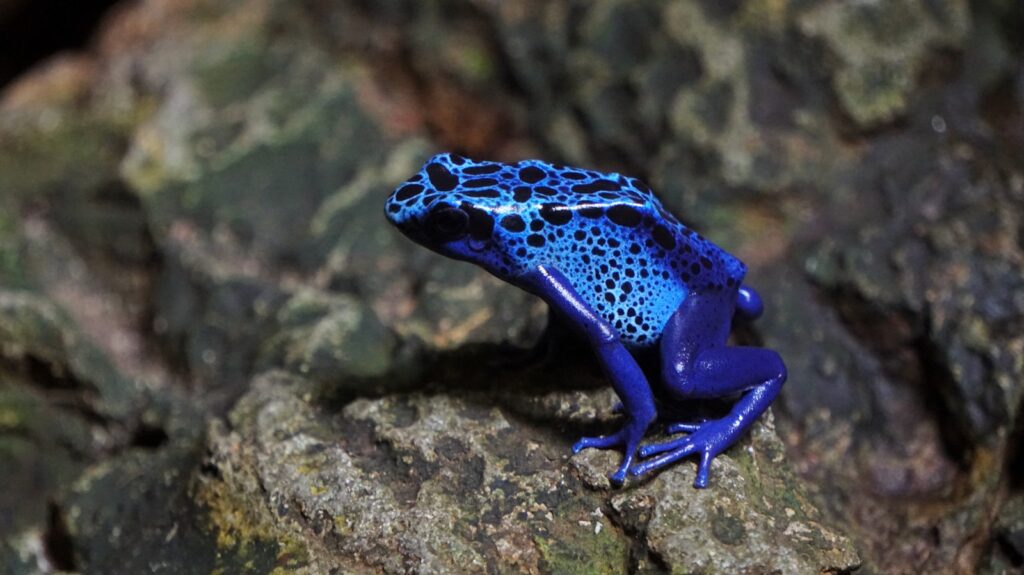
While technically amphibians rather than reptiles, poison dart frogs deserve mention for their unparalleled vibrant coloration among captive exotic pets. Species like the blue and black Dendrobates tinctorius “Azureus” and the strawberry poison dart frog (Oophaga pumilio) display electric blues, vibrant reds, and neon yellows that rival any reptile in visual impact. Captive-bred specimens lose the toxic properties of their wild counterparts, making them safe to keep as pets. These frogs require specialized terrariums with high humidity, proper drainage systems, and live plants to thrive in captivity. Though they’re display pets rather than handling animals, their active daytime behavior allows owners to fully appreciate their spectacular coloration throughout the day as they explore their naturalistic enclosures.
Chinese Water Dragons: Emerald Beauty
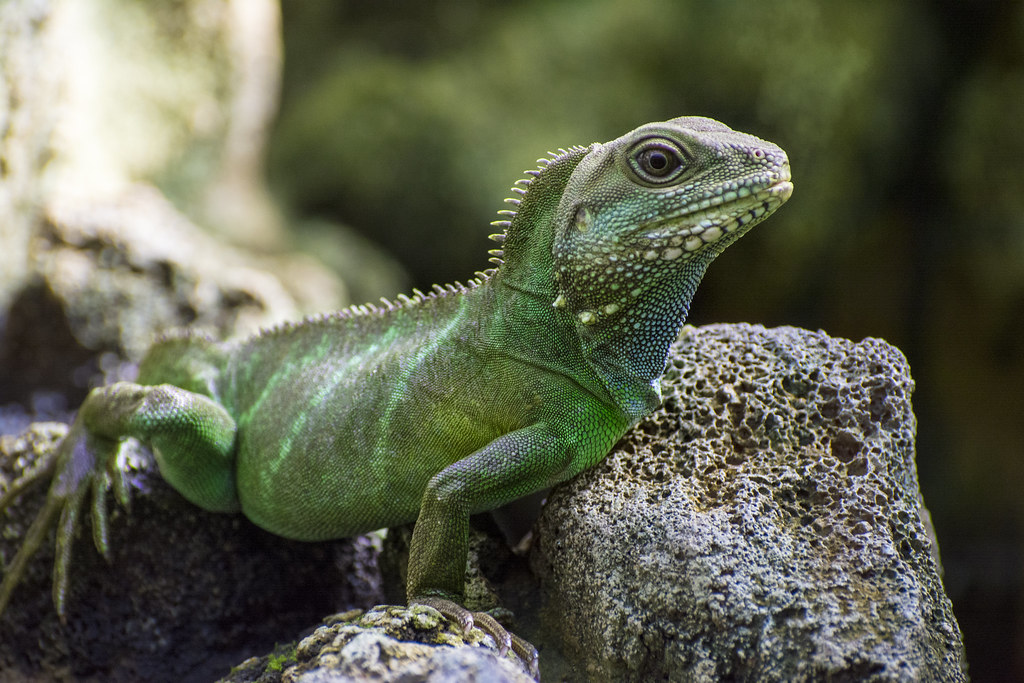
Chinese water dragons (Physignathus cocincinus) offer a striking emerald green base color accented with beautiful blues, oranges, and yellows on their throats and cheeks. Males develop particularly vibrant throat coloration during breeding season, with some specimens displaying almost iridescent blues and purples that catch the light magnificently. Their long, elegant bodies and alert expressions make them visually captivating reptiles that command attention in properly sized enclosures. While their care is more complex than some entry-level reptiles, requiring large enclosures with swimming areas and high humidity, water dragons that are properly socialized can become relatively tame and make impressive display animals. Their predominantly green coloration makes them perfect centerpieces for lush, planted vivariums that recreate their native Southeast Asian environments.
Red-Eyed Crocodile Skinks: Prehistoric Colors
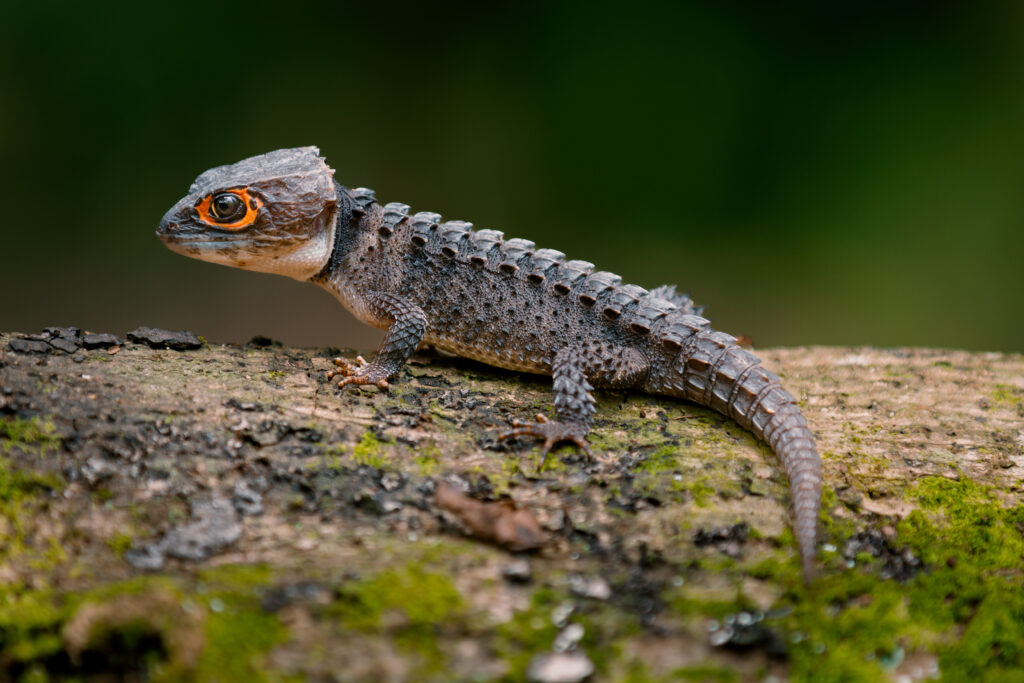
Red-eyed crocodile skinks (Tribolonotus gracilis) combine dramatic crimson eyes with a richly colored reddish-brown to orange body adorned with cream-colored ridges that give them a prehistoric appearance. These unusual reptiles make a striking visual impression despite their small size, with colors that appear almost artificially enhanced but are entirely natural. Their eye color is particularly striking, ranging from bright ruby red to deep garnet, creating a beautiful contrast against their textured, dragon-like scales. While not as vibrantly colored as some other species on this list, their unique combination of colors and textures gives them a distinctive beauty unlike any other commonly available reptile. Though shy and primarily nocturnal, patient owners are rewarded with glimpses of these fascinating, colorful lizards as they explore naturalistic terrariums.
Caring for Colorful Reptiles: Special Considerations
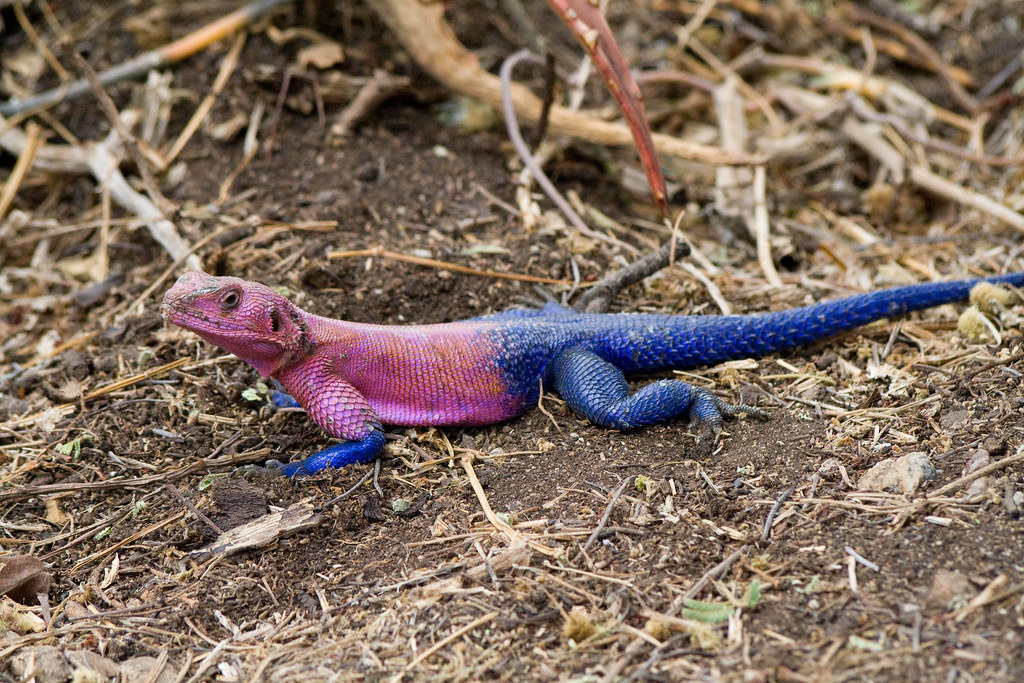
Maintaining the vibrant colors that make these reptiles so appealing requires attention to several key factors in their care. Proper nutrition plays a crucial role, with many species requiring carotenoid-rich foods to maintain their orange and red pigmentation, while others need specific mineral supplementation to prevent color fading. Appropriate lighting, particularly UVB exposure for diurnal species, helps many reptiles display their most vibrant colors while supporting vital metabolic functions. Regular, proper shedding is essential for color clarity, which means maintaining appropriate humidity levels specific to each species. It’s worth noting that stress frequently causes color dulling in reptiles, so creating appropriate enclosures with proper hiding spots, temperature gradients, and minimal handling when necessary will help your colorful pet maintain its vibrant appearance for years to come.
The world of colorful pet reptiles offers something for everyone, from beginner-friendly options like crested geckos and corn snakes to more challenging species like panther chameleons and green tree pythons. While their striking appearances make these animals appealing additions to any collection, responsible ownership means researching each species thoroughly before purchase to ensure you can provide the specific care they require. Beyond their beautiful colors, these reptiles offer fascinating behaviors, unique personalities, and the opportunity to create stunning naturalistic displays that can serve as living art in your home. With proper care, many of these colorful companions can thrive for a decade or more, providing years of enjoyment for the dedicated reptile enthusiast.

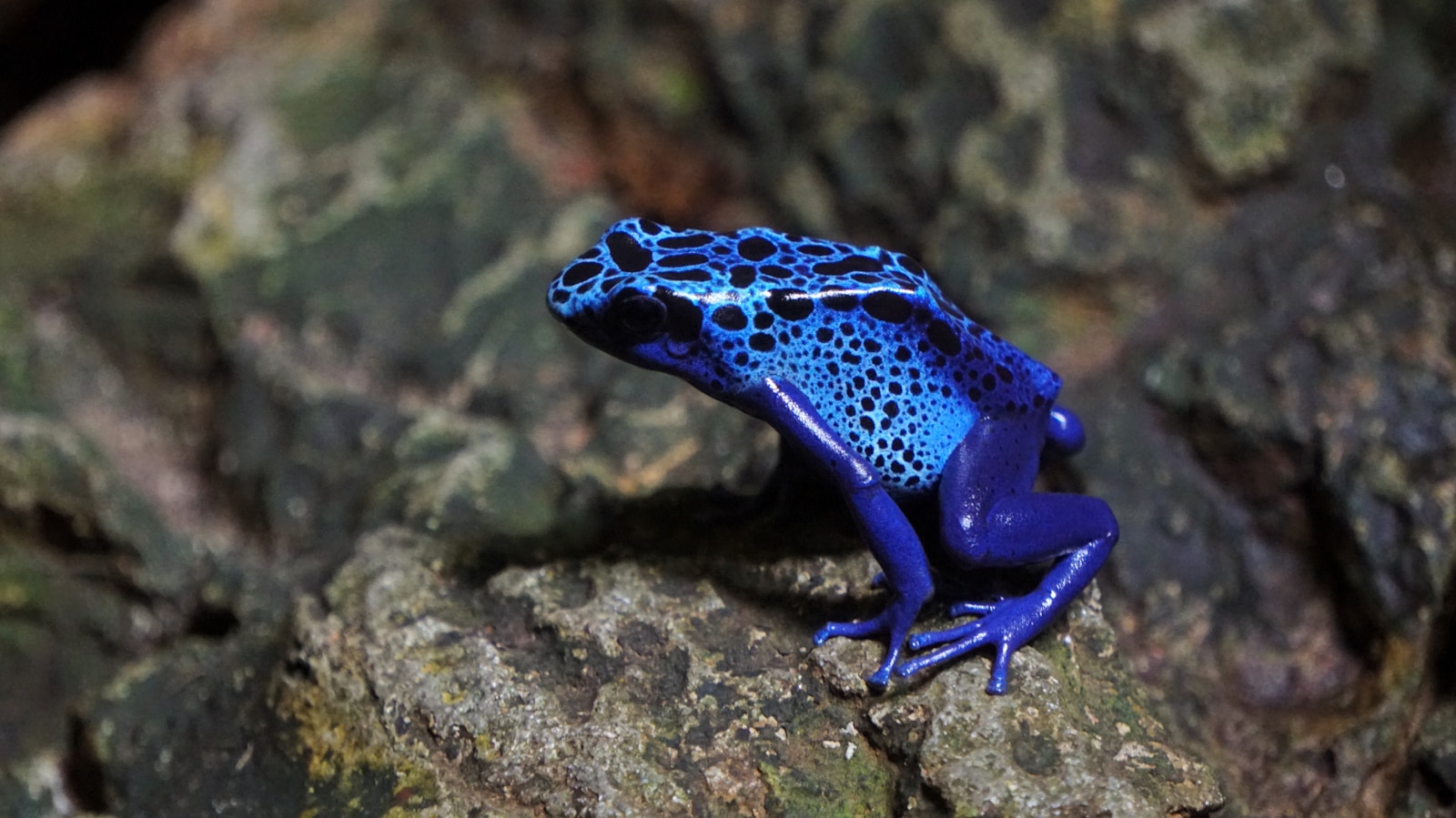



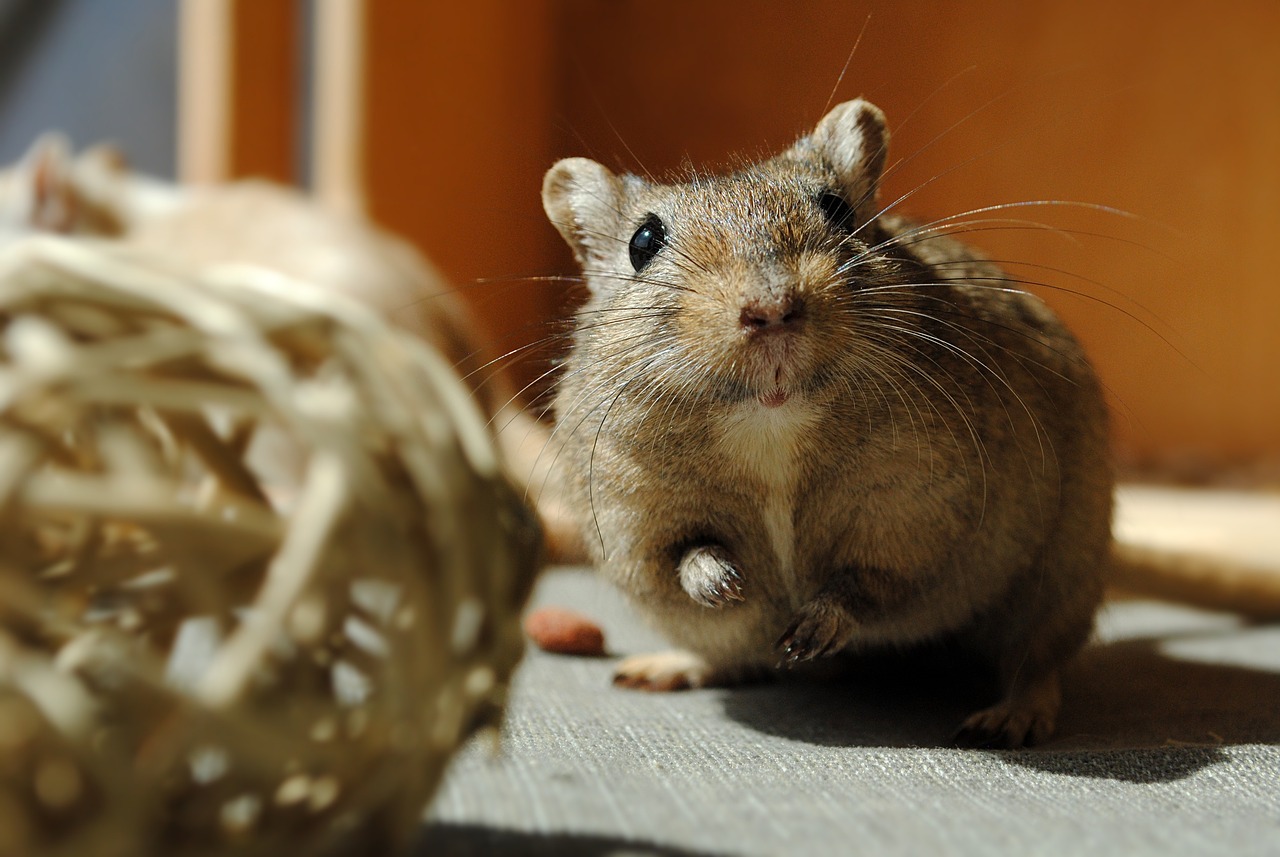


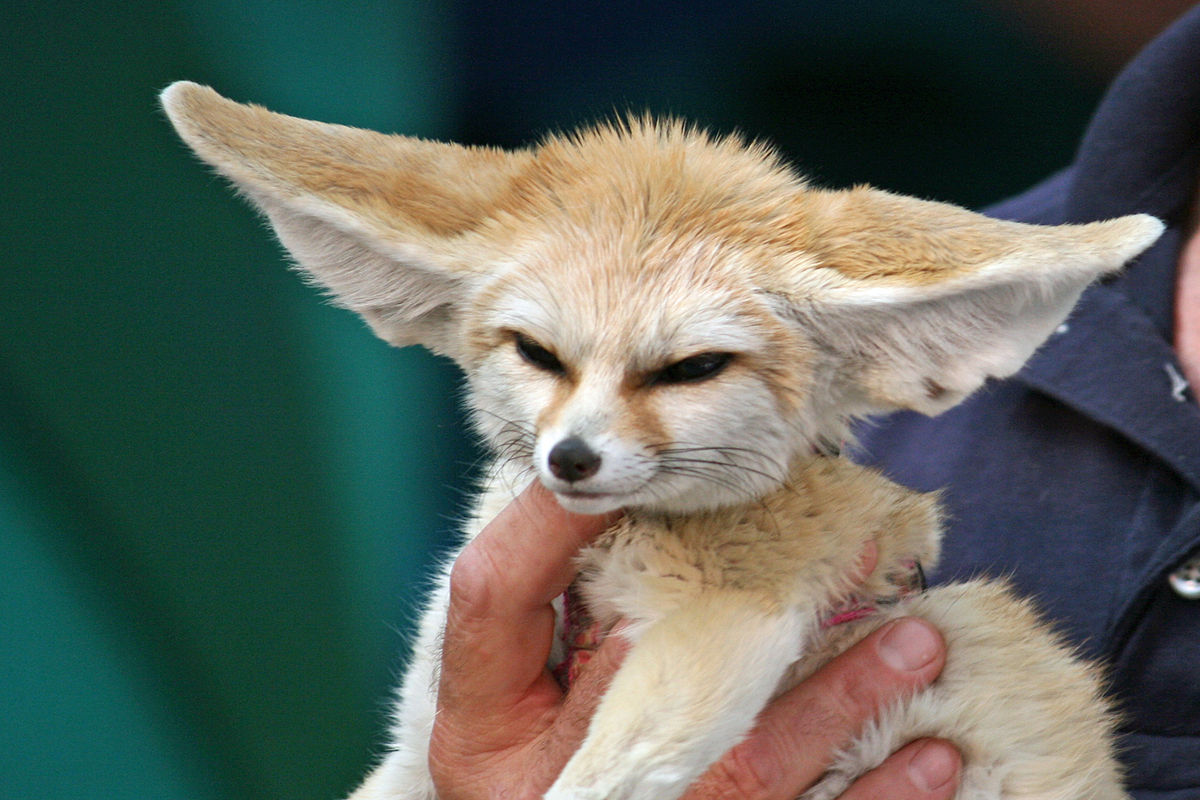







Leave a Reply